Masterthesis SoSe 21
Sinali Lal d’Aram de Valada
Betreuung: Natural Building Lab
Zweitprüferin: Prof. Tatjana Schneider, TU Braunschweig
All Content
© Sinali Lal d’Aram de Valada
The Craft yard aims to re-think the biodiversity of an existing courtyard within a “Berliner Block” as a living habitat, a social and ecological open space in Schöneberg. The existing protected ensemble of ‘Maison de Santé’ is a chosen site of inquiry as a standstill and fragmented with conflict of interests despite its multilayered historical claims in subverting the top-down processes. The future vision for this project is proposed within the framework of the existing European Environment Commission (EEC): Biodiversity 2030, the habitat & bird directives, farm-to-fork, ecosystem services, and green infrastructure strategy.
The program for the Craft yard is evolved through a wish pool created by interviewing the inhabitants & Initiatives in the neighborhood. An Association of an already existing bottom-up institution and significant historical pioneers is proposed. Four themes of Local – Biodiversity, Craft – Practice, Actor – Solidarity and Knowledge – Resource forms the base for a future program, collaborations and sustainable growth as a process for the overall site.
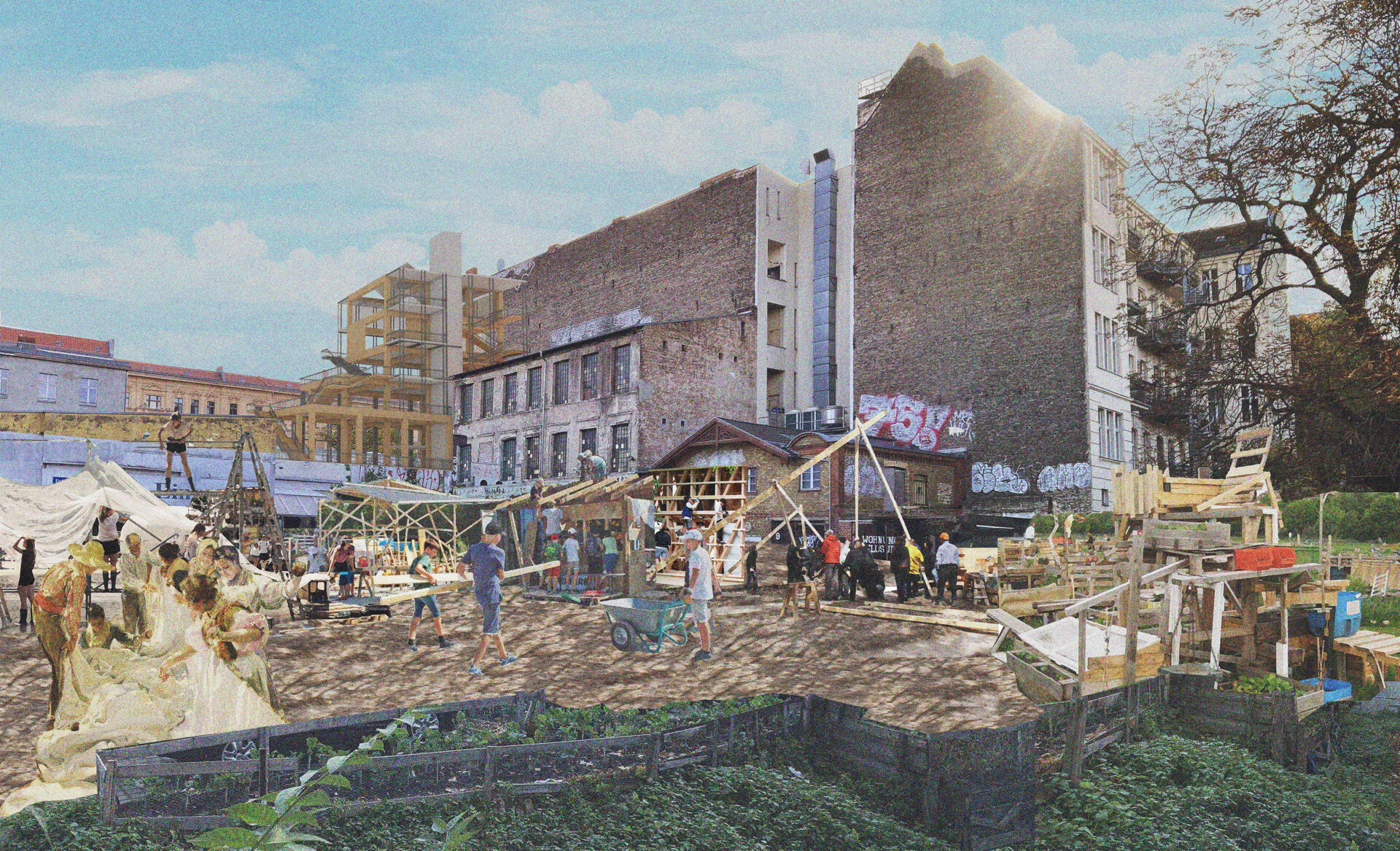
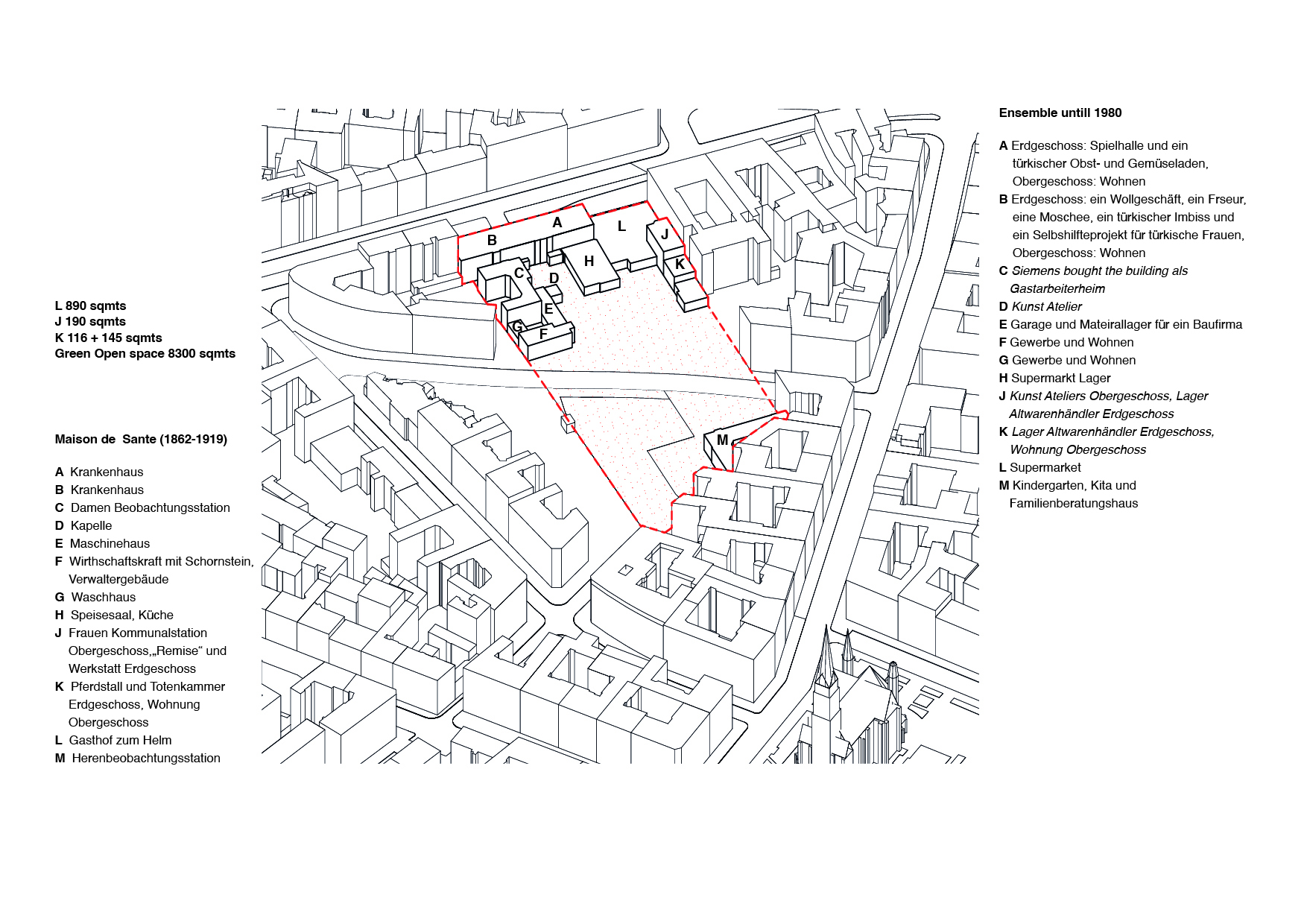
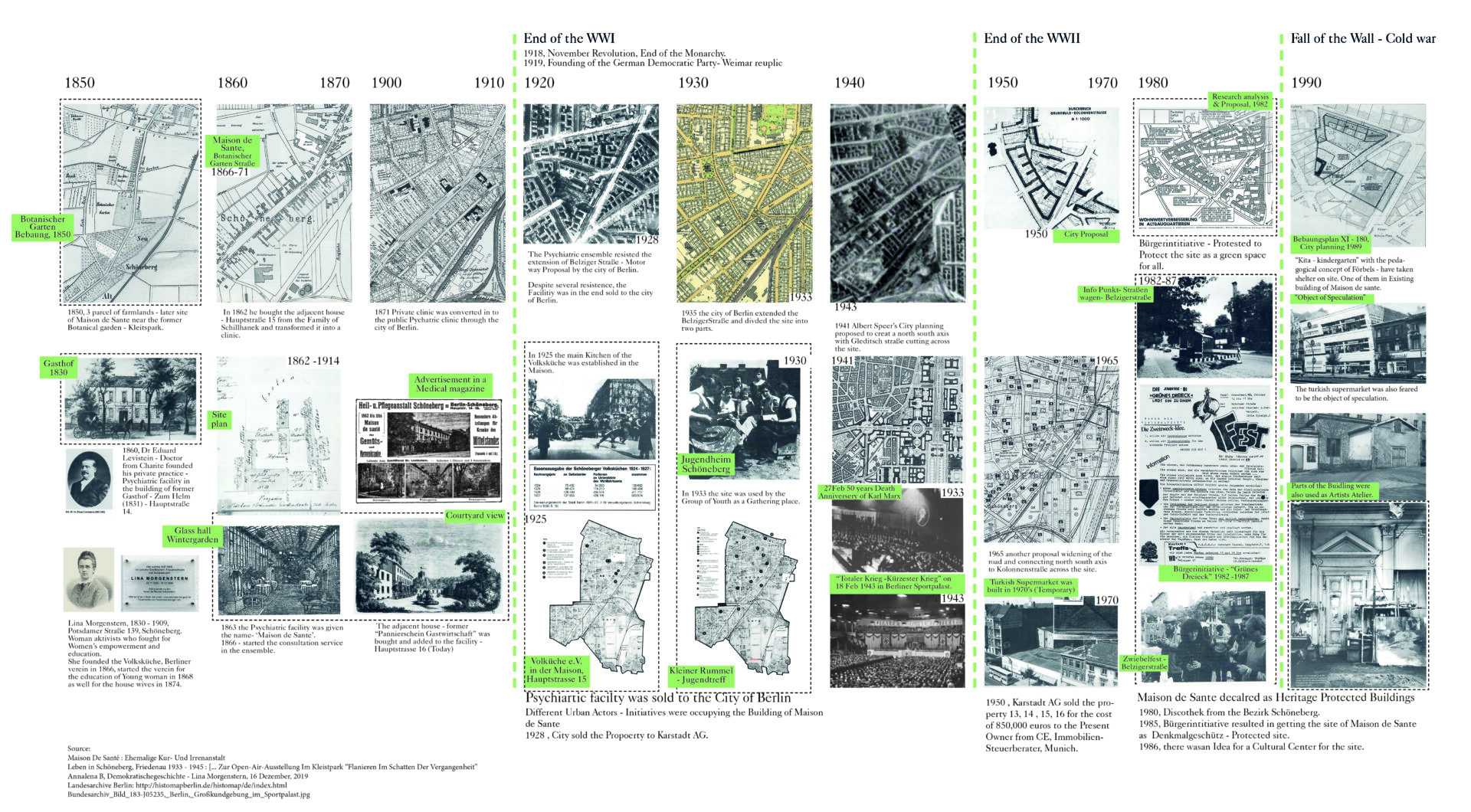
Interview process
In order to design the program, wishes of the future and what is missing, feedback was collected in the neighborhood through a set of questions.
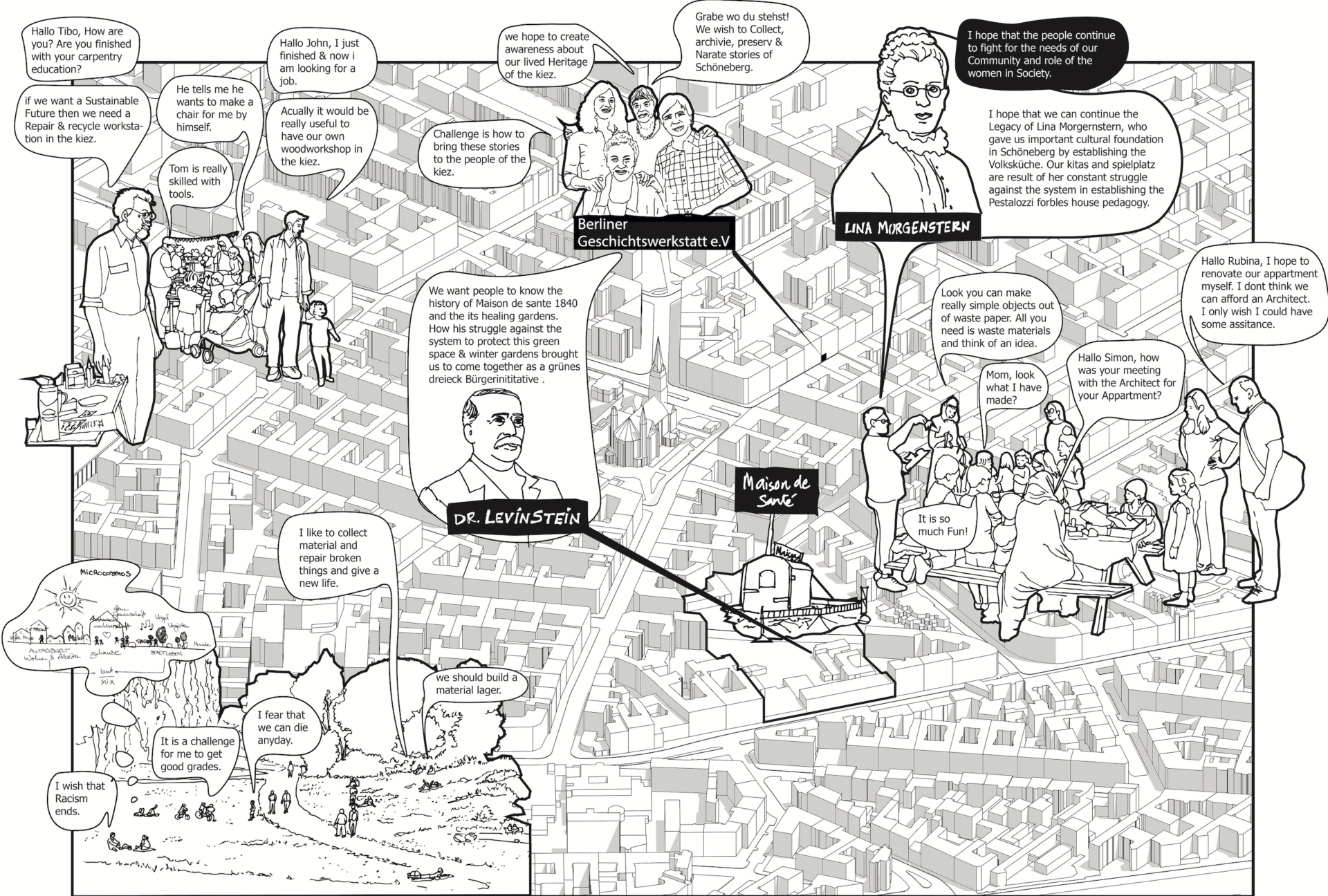
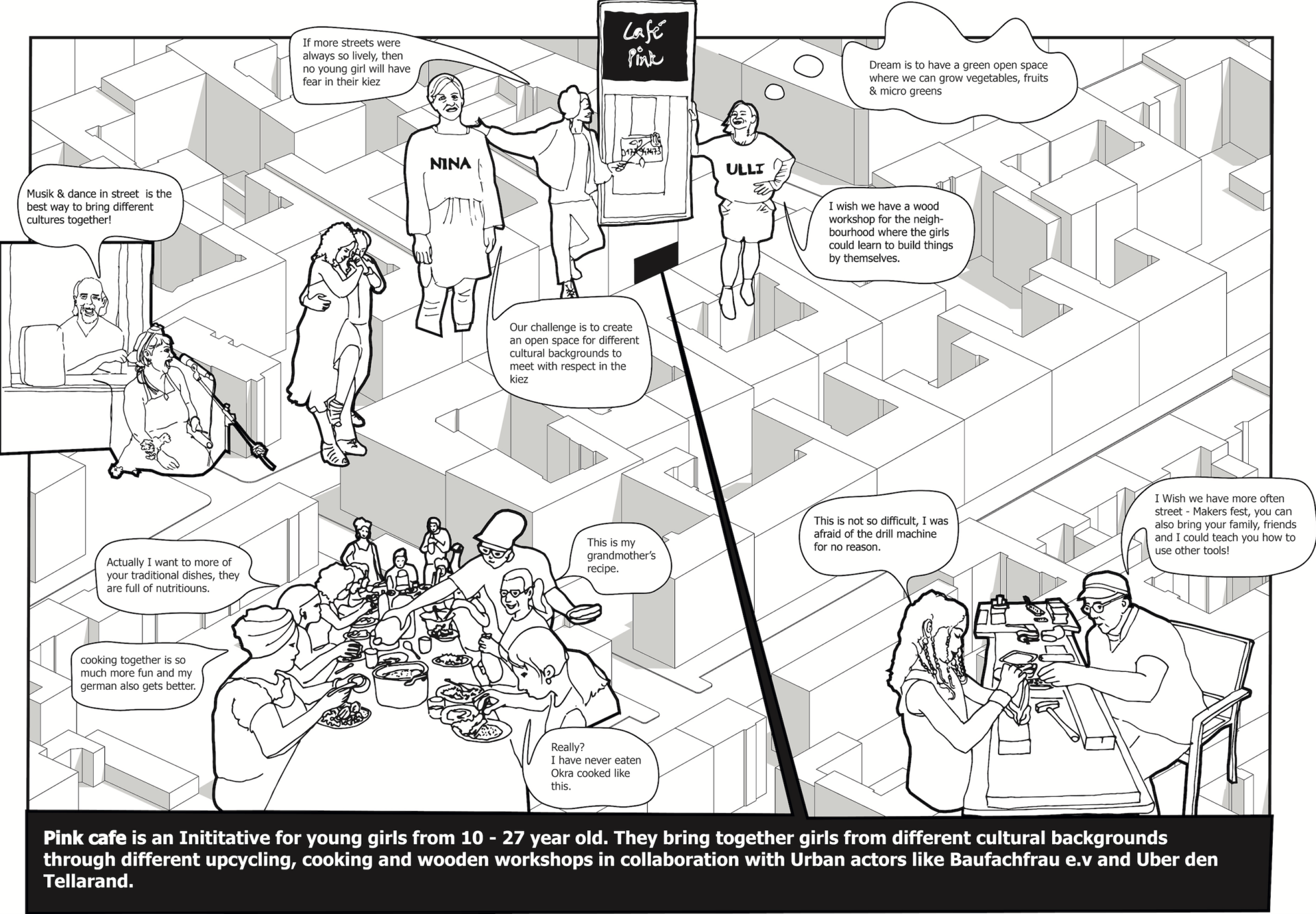

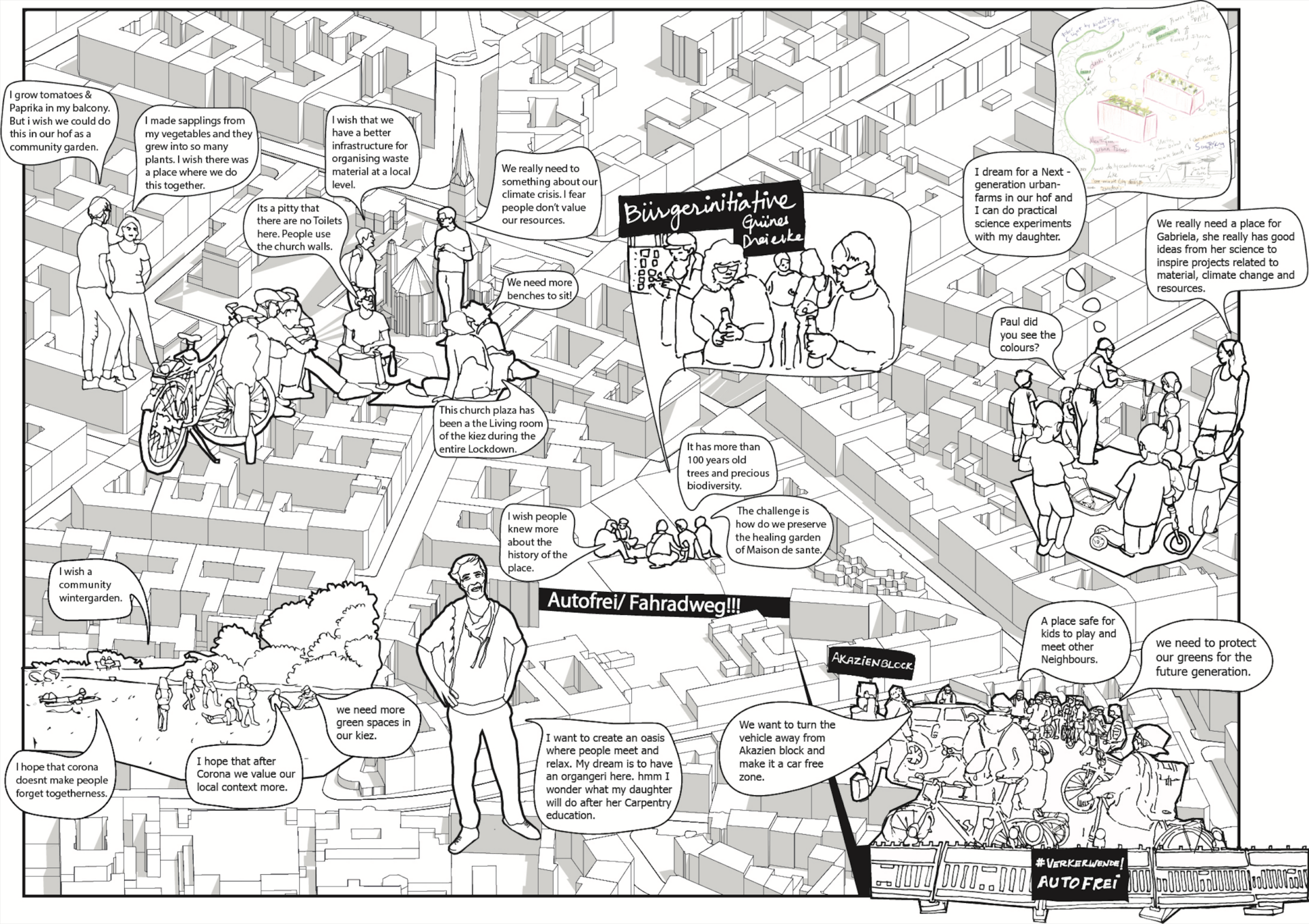
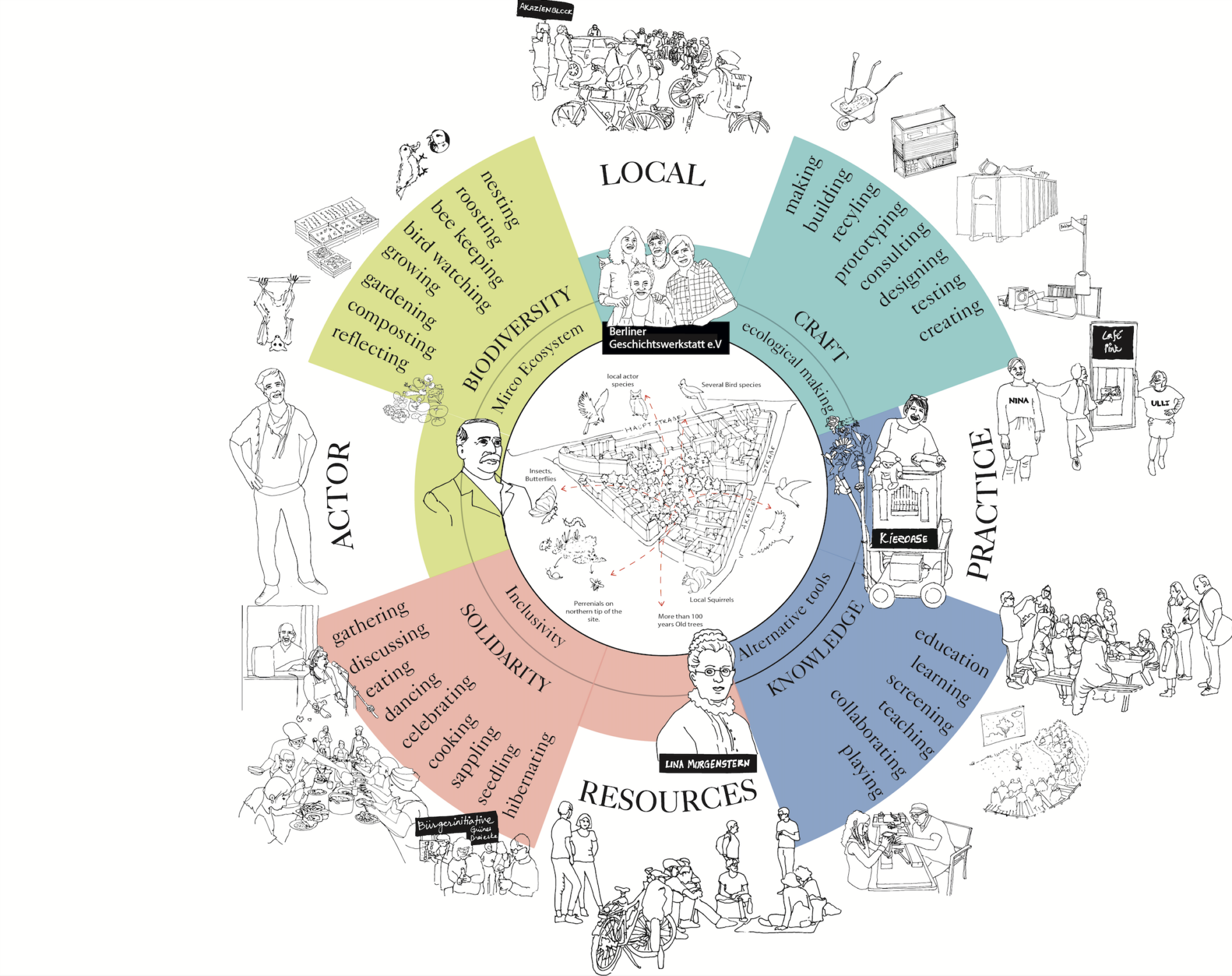
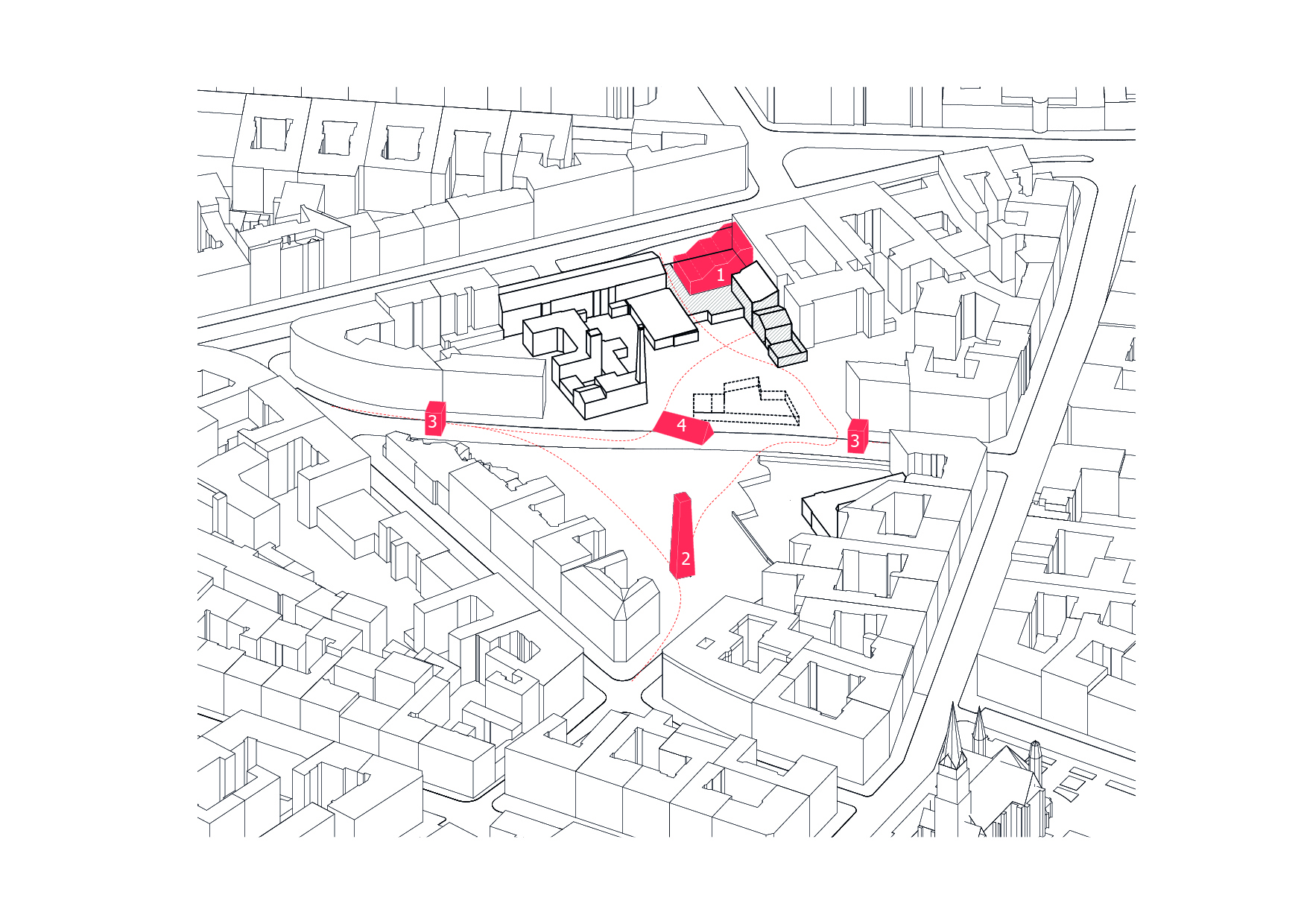
1. Craft structure and material recycling yard
2. Treehouse
3. Maisonette info kiosk
4. Community kitchen (green house)
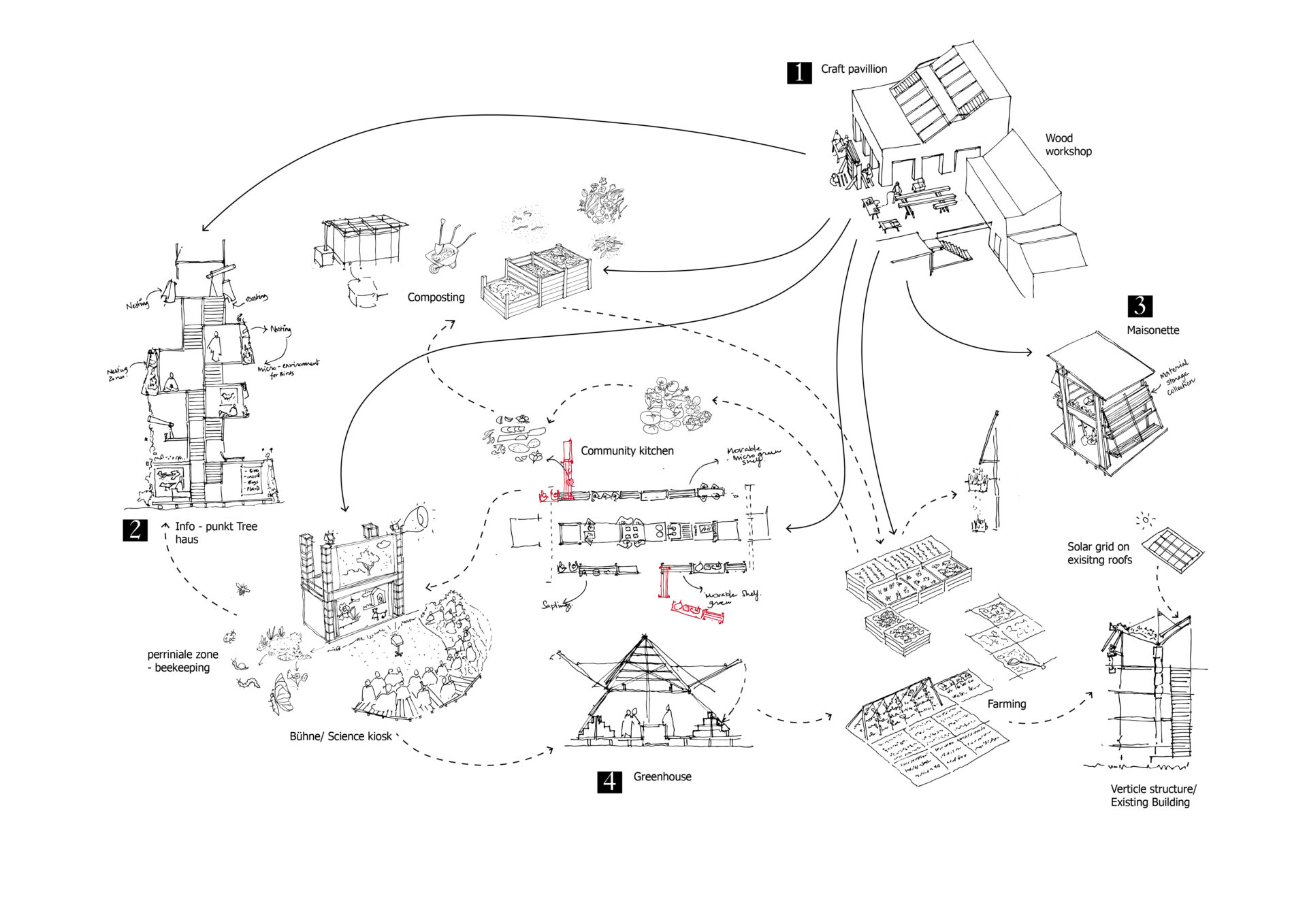
1. Craft-structure
Craft-structure introduces local Material recycling sequence from the collection point, to sorting yard, Material lager, Tool-yard, Wood workshop in the empty existing building and new structure for the growing future needs of the neighborhood in the Craft-yard. Collection point is a shelf structure installed in different location of the courtyard to collect broken and old furniture/material/ waste on everyday basis which can be repaired & reused at the sorting yard.
Material from the shelf from the collection yard is brought to the Material lager (a shelf built around abandoned walls) where material is stored based on the type, usability, damage & repairability. From the material lager based on the damaged materials are then brough to the sorting yard where material is sorted based on type and damage. After sorting the material is brought to the wood workshop for further repair.
Tool-yard is organized with the help of gifted tools from the neighborhood and is available for any kind of work in the craftyard. Once the material is repaired, they are sorted as ready to be reused material and stored in the material lager for future use. Material for further is taken to the wood workshop from the here to make new furniture, hoch beet or gemuse beet. New furniture or experimentation then happens on the new ground where prototype is designed and prepared in the wood workshop. large scale prototypes are assembled or installed on the assembly & building ground @New ground Craftstructure.
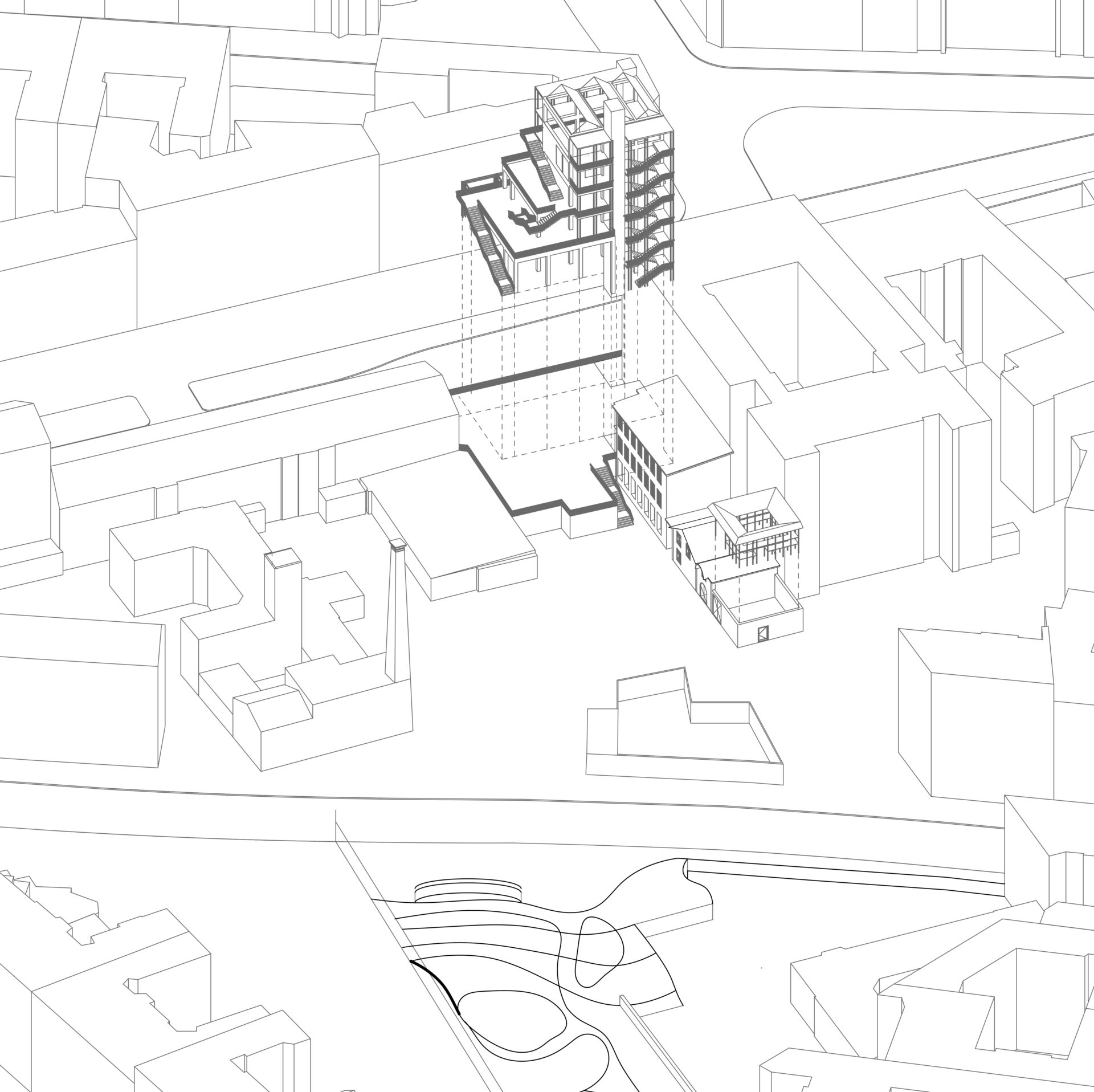
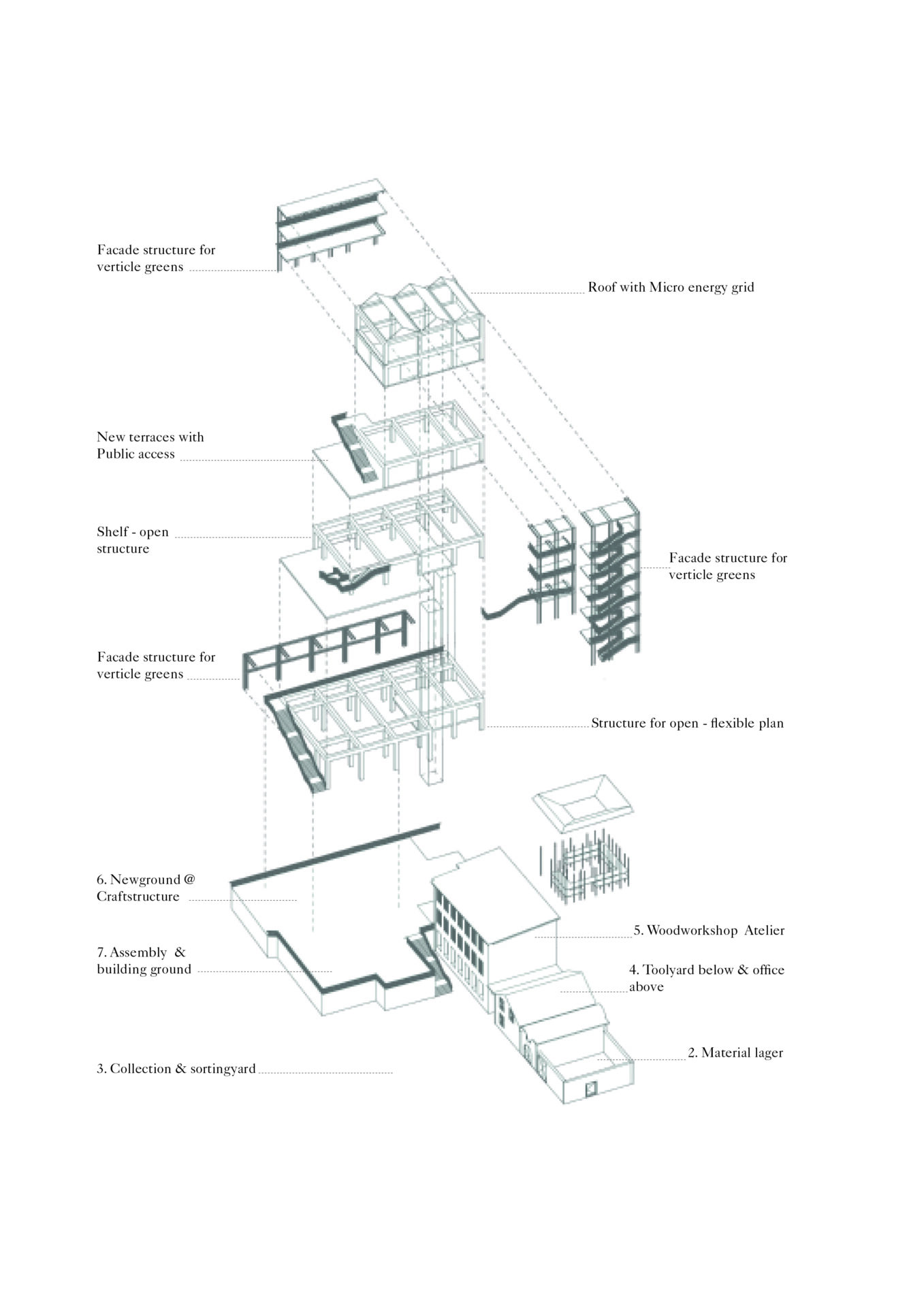
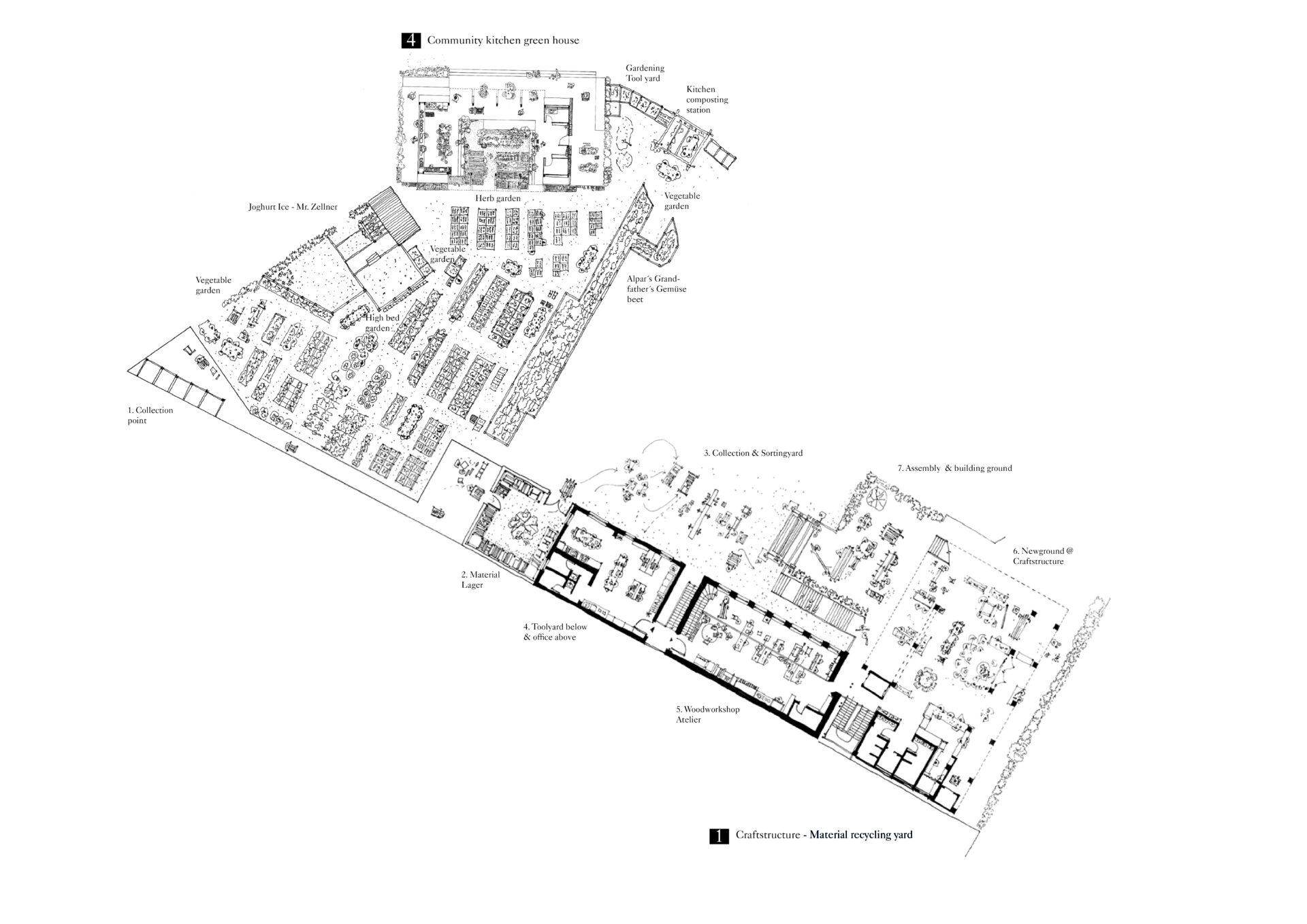

2. Treehouse
Treehouse is a cohabitation structure in the existing natural wild bee zone in the site of the kita Vorberg Nachbarschaftsheim to support the life cycles of different species: birds, insects and Perennials with a Tool-yard for gardening, Spaces for Meditation and Mapping species as a citizen science project.
Treehouse is a cohabitation structure to support the biodiversity of the courtyard on the ideas of ‘Nature culture’ as Donna Haraway describes. On the ground floor, Treehouse cafe offers registration to the workshops as well as tea – coffee and snacks. The toolyard provides tools for workshops on Perennial gardening and mapping the perennial zone.
The higher levels of the structure are gathering spaces and offers a different program for film screening, informal talks lecture demonstration. Apart from the defined program, the structure is also meant for the undefined program as learning spaces for children and meditation spaces for adults as well as nesting-resting zones for different species of birds, a home for perennial species as well as squirrels and rabbits and a house for the community of bats.
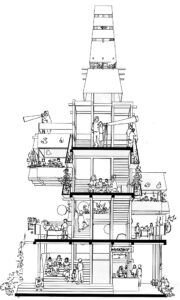
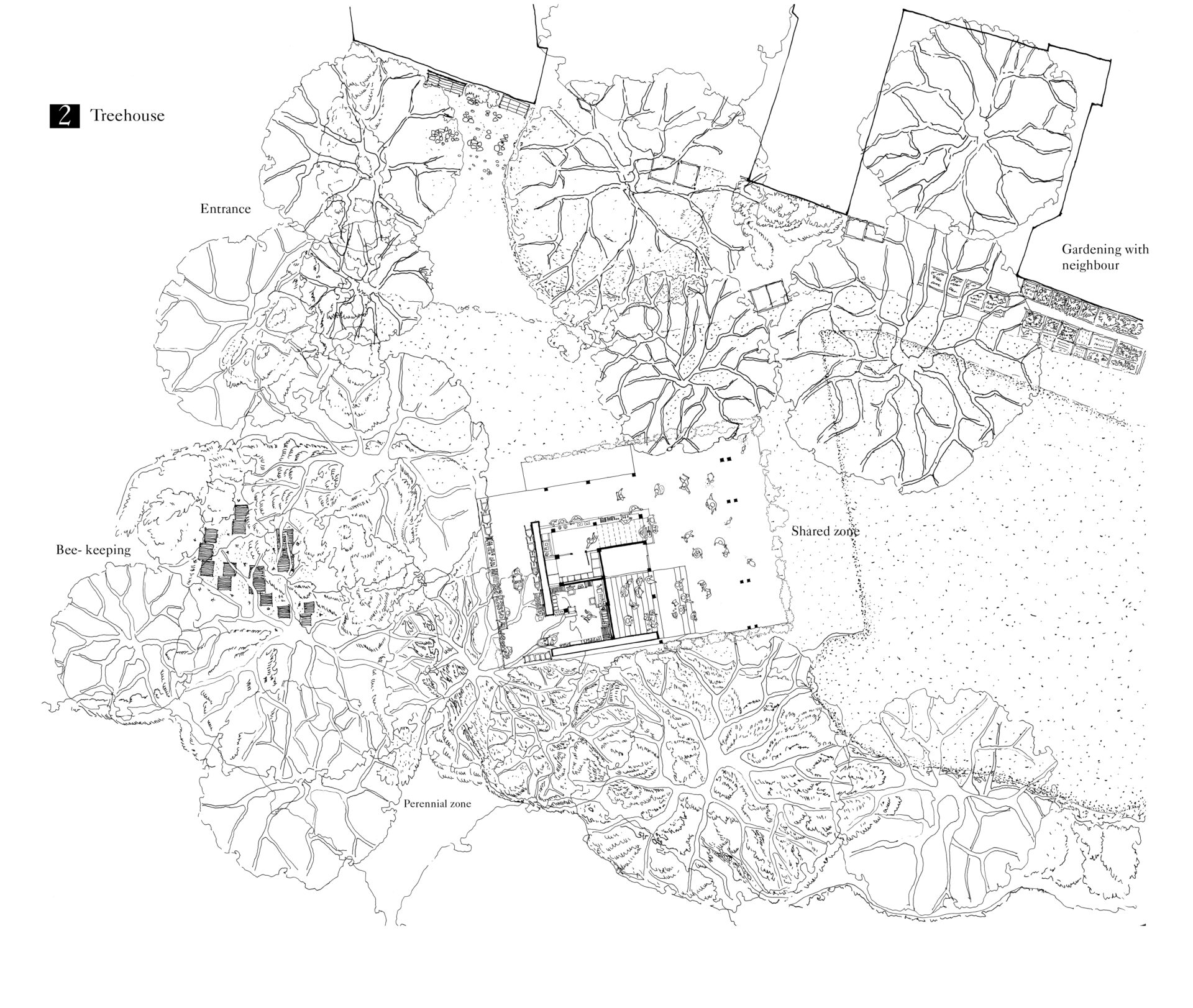
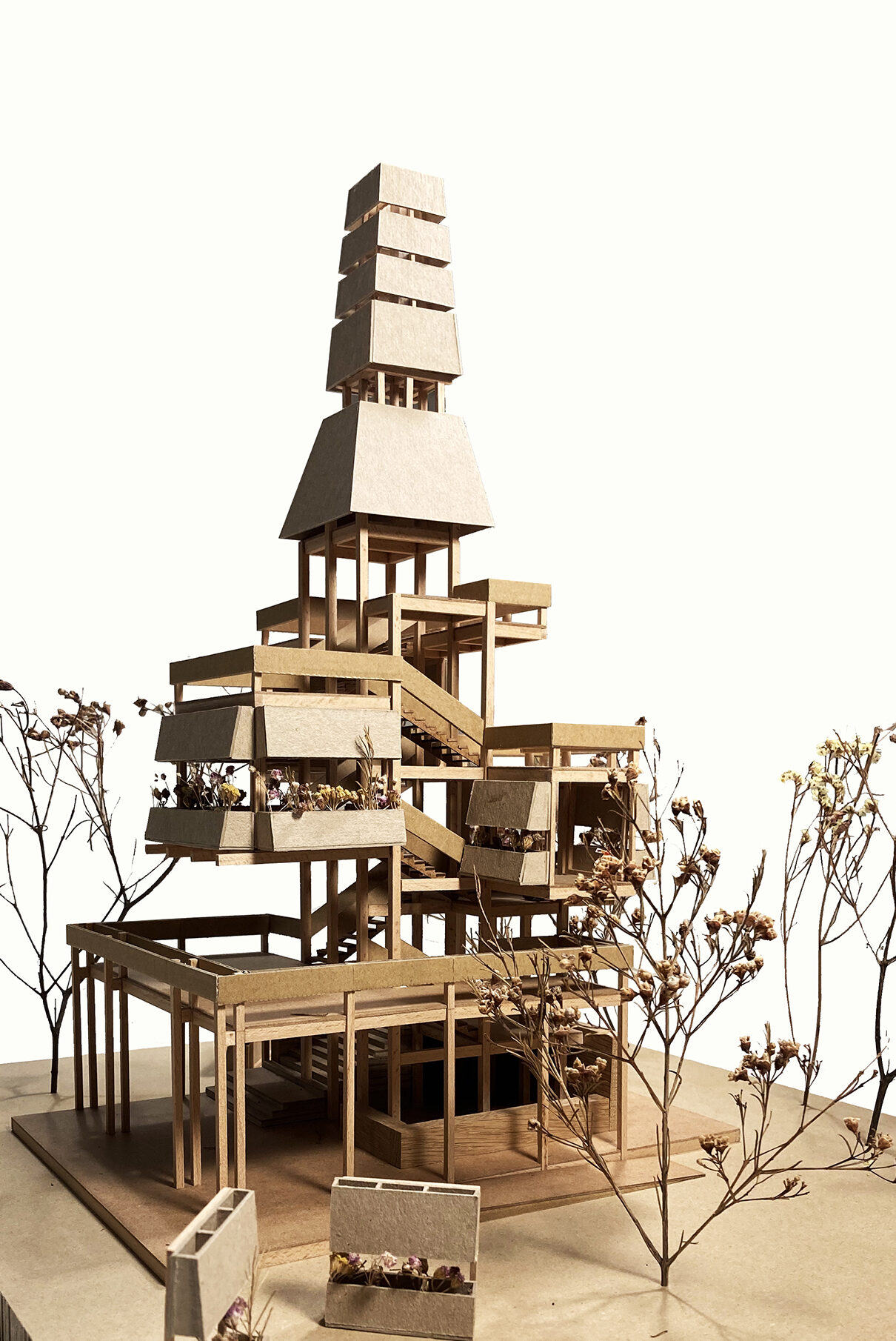
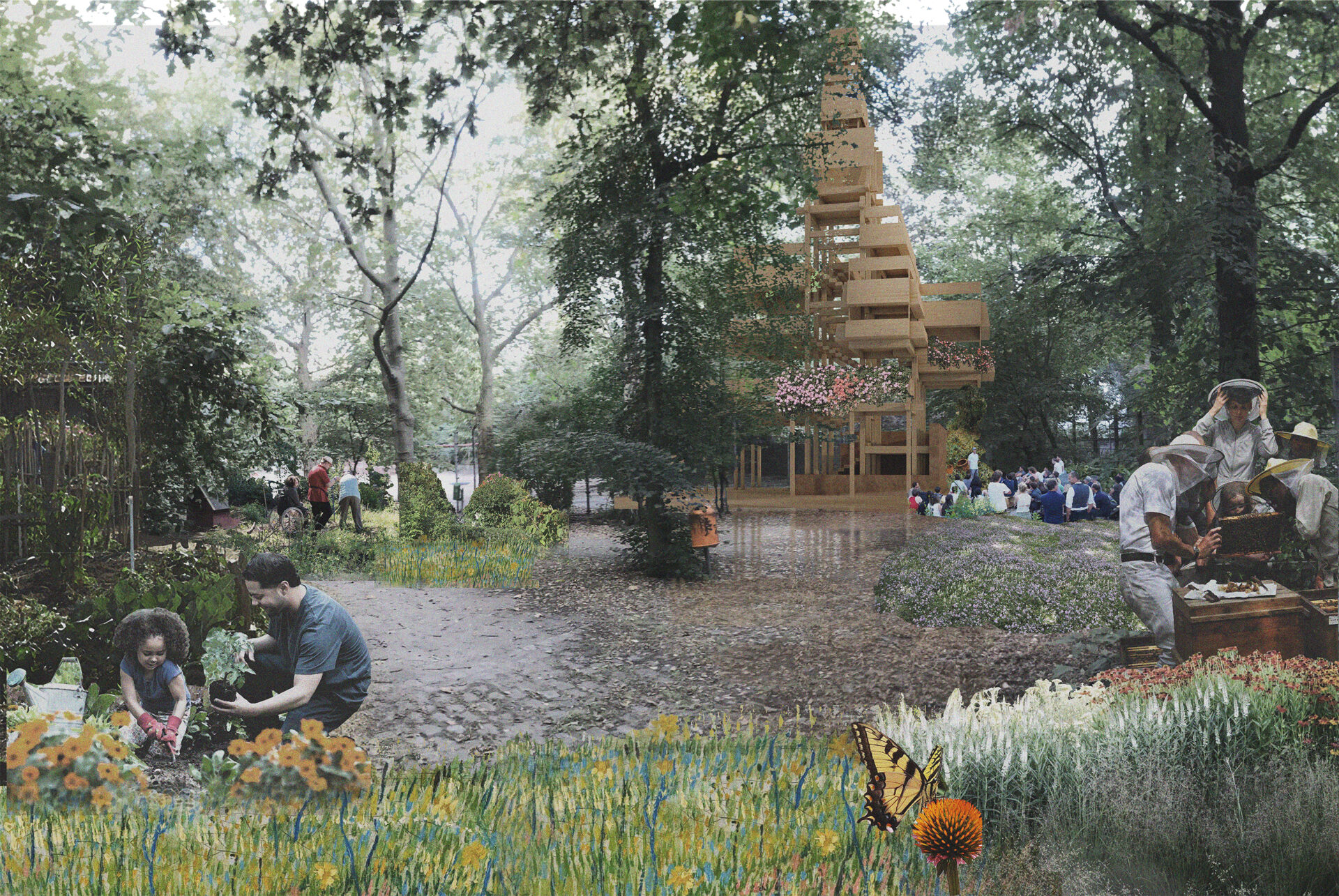
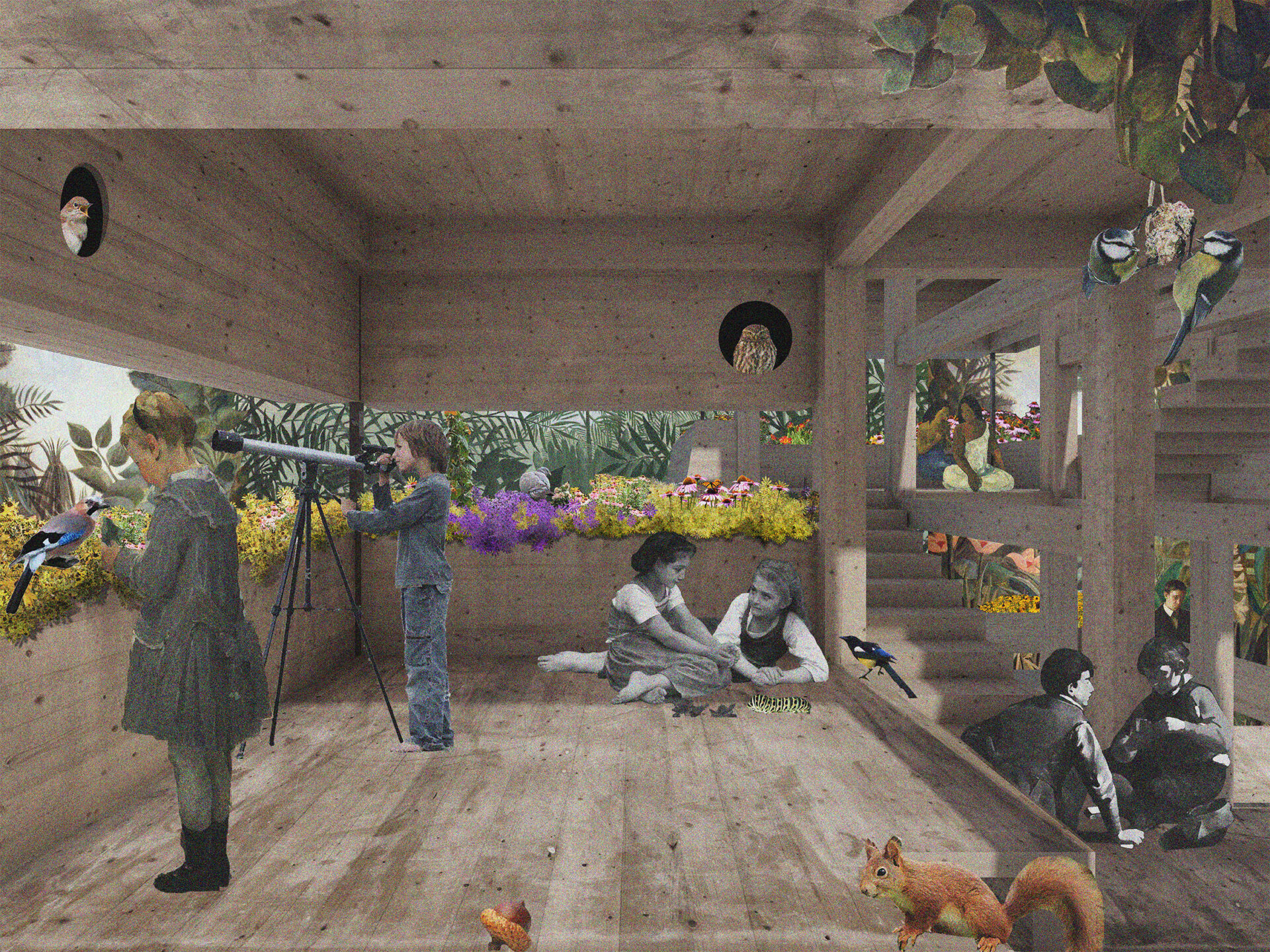
3. Maisonette info kiosk
As a symbolic gate, Maisonette is an ‘Info-point’ for the craft-yard. It has structure that unfolds as a tool kiosk and mobile workshop on the street. The kiosk forms an extension of the kita’s allowing activities to spill around after official hours. it is run in collaboration with parents and jugend club on the site and offers special programs for children like film screenings and theater workshops. In the evening the kiosk transforms into a stage for performances, concerts and invites artists together with the youth club.
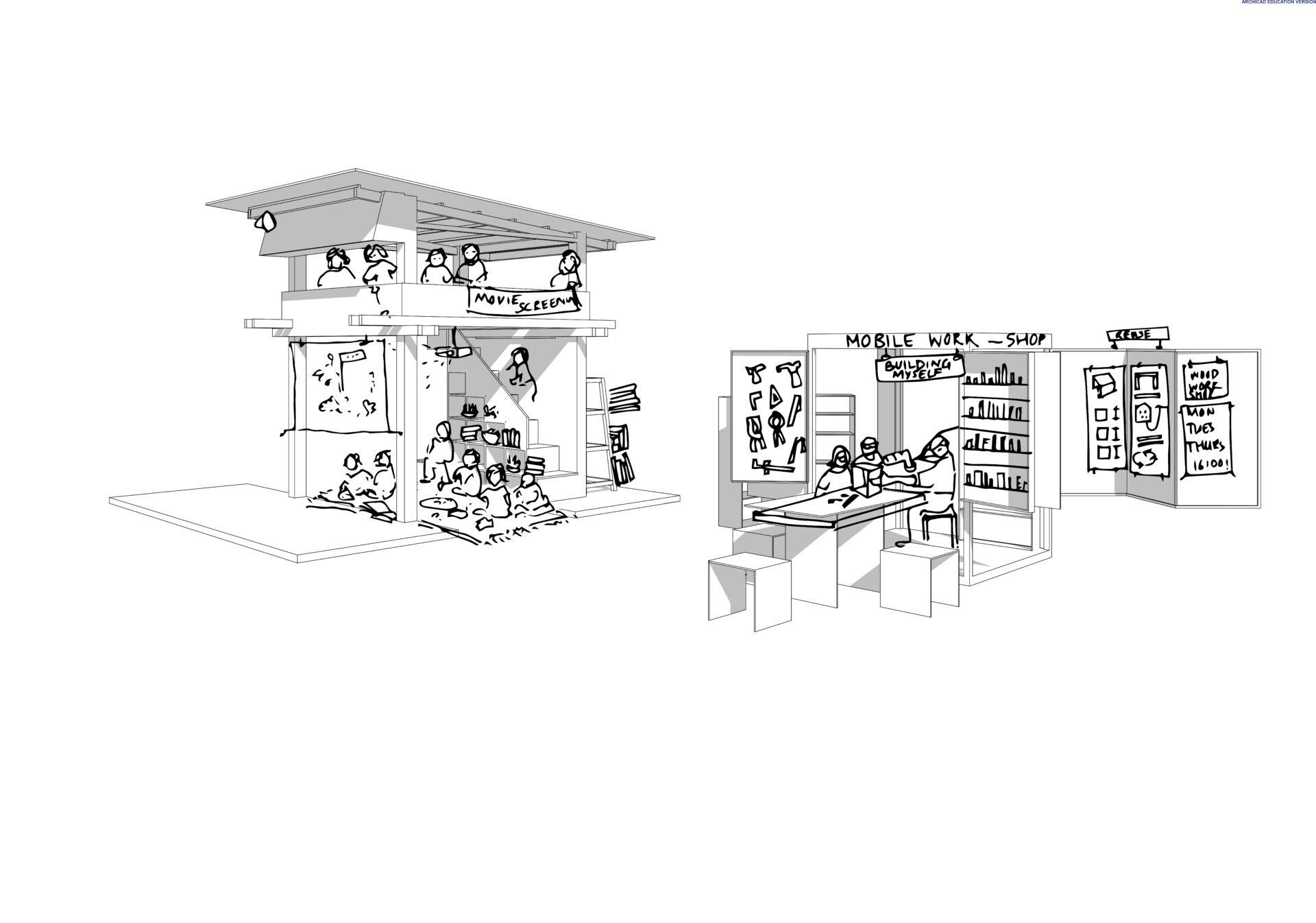
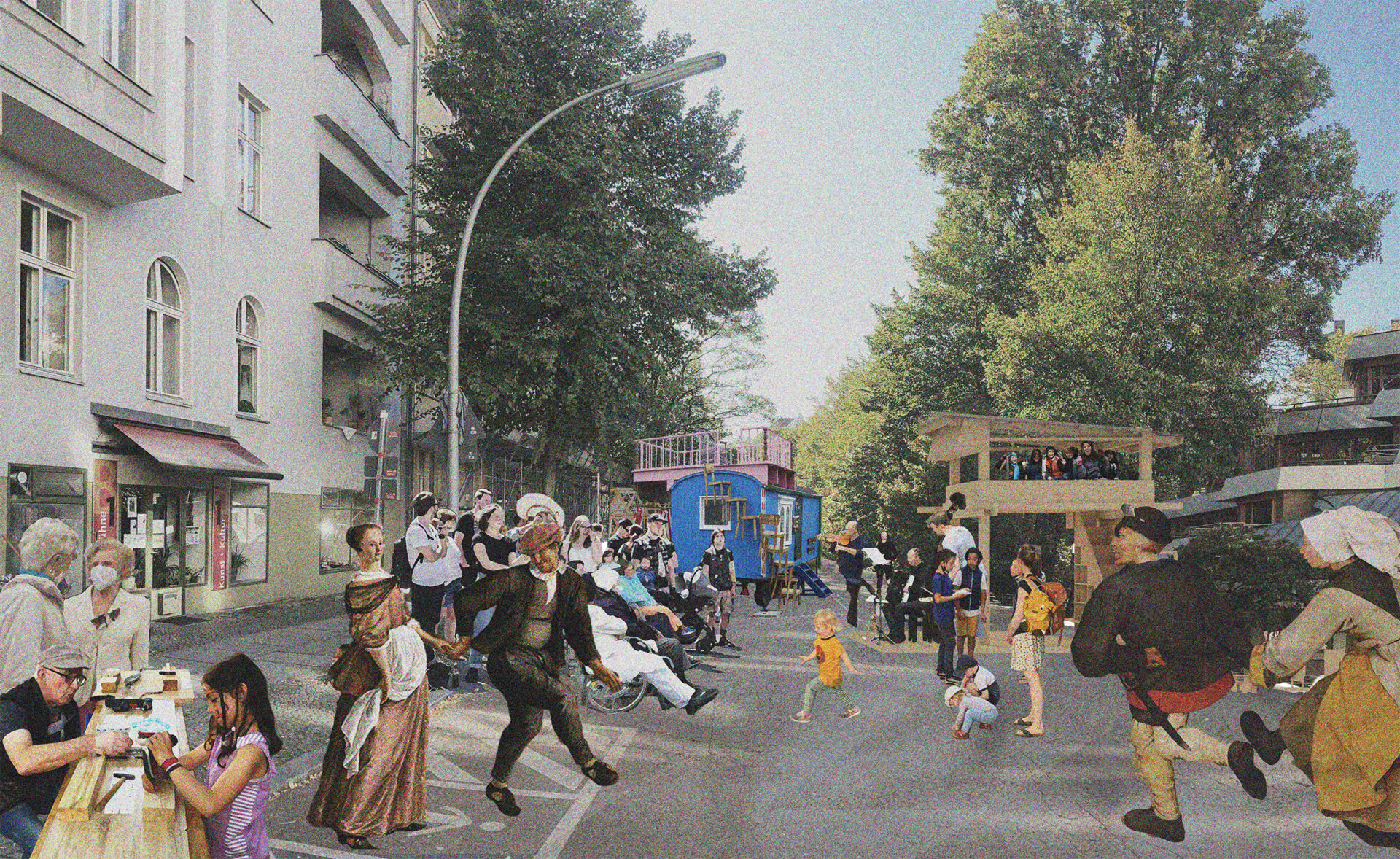
4. Community kitchen
Community Greenhouse joins an existing local actor Alpar‘s vegetable garden on site and creates a food chain cycle: herb garden, kitchen garden, high beds, composting yard, cooking workshops and events around Food to fork strategy
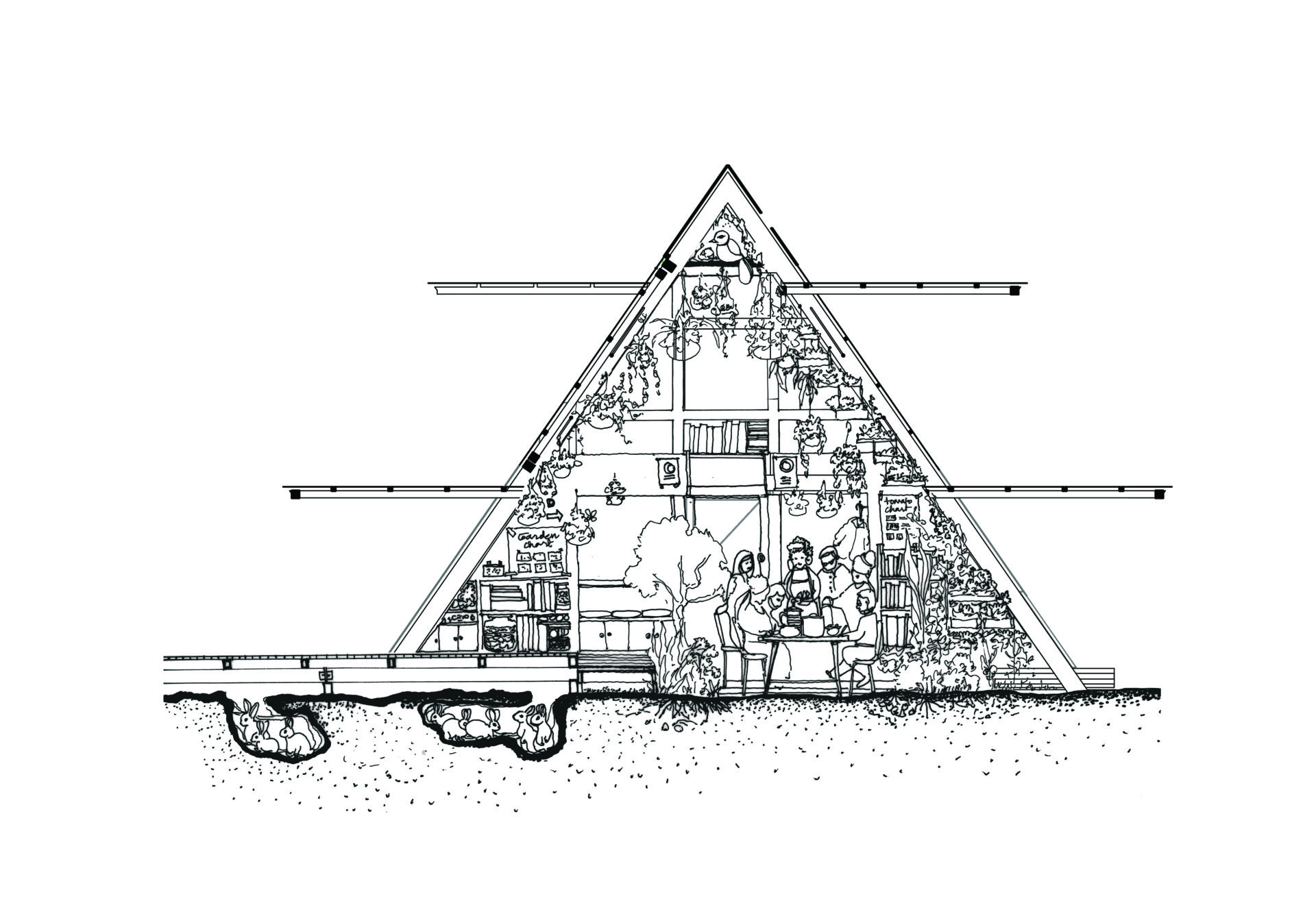
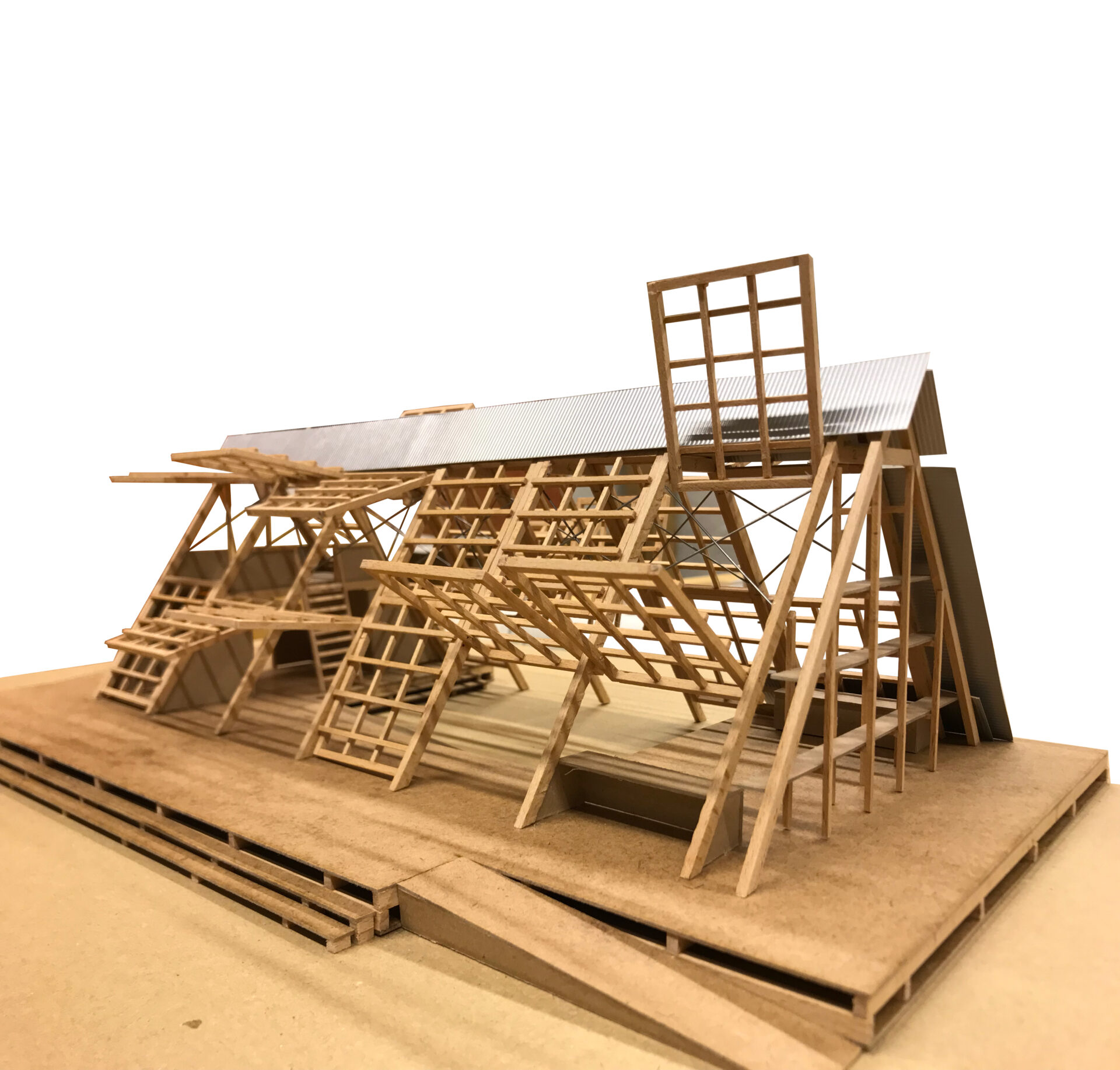
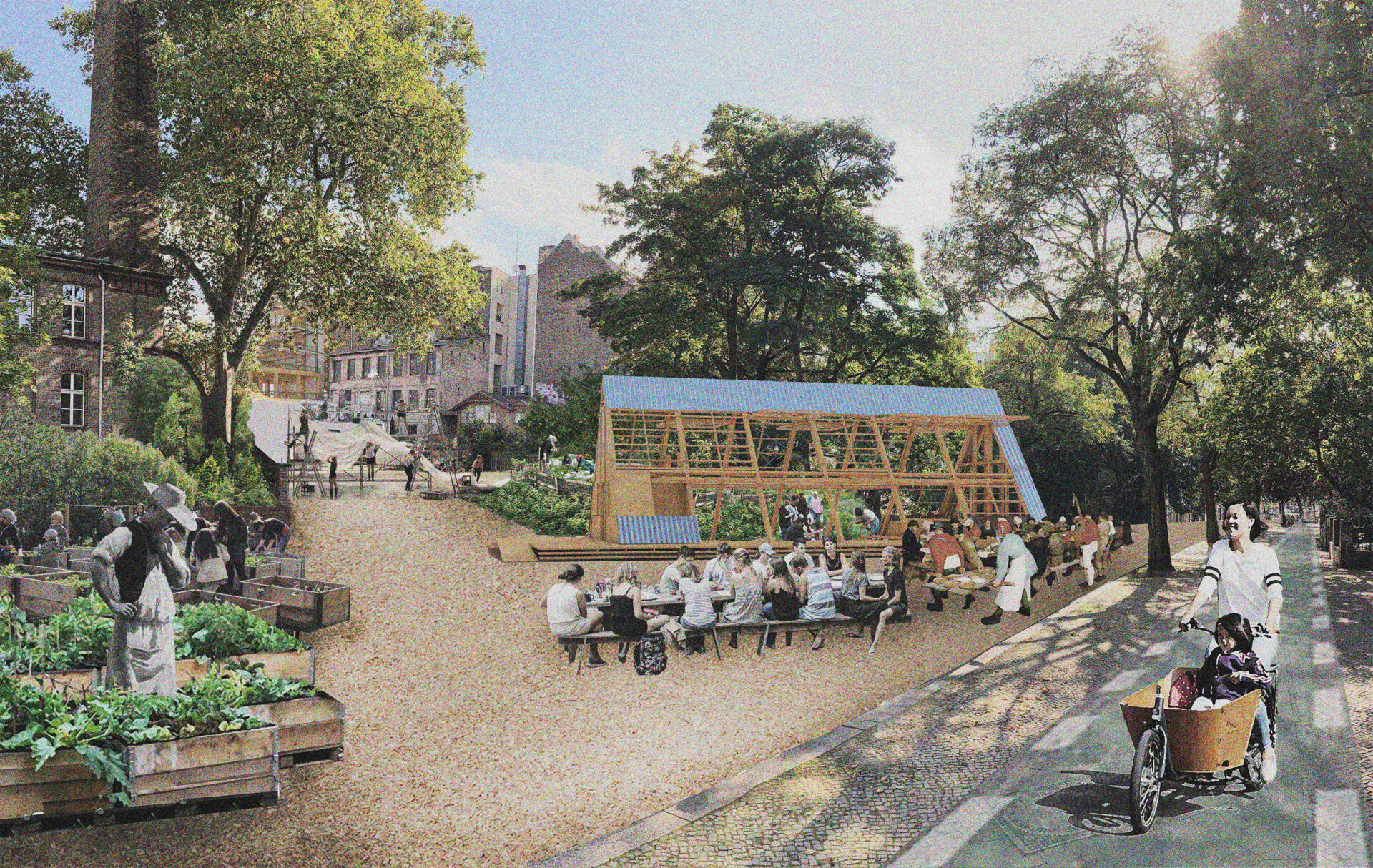
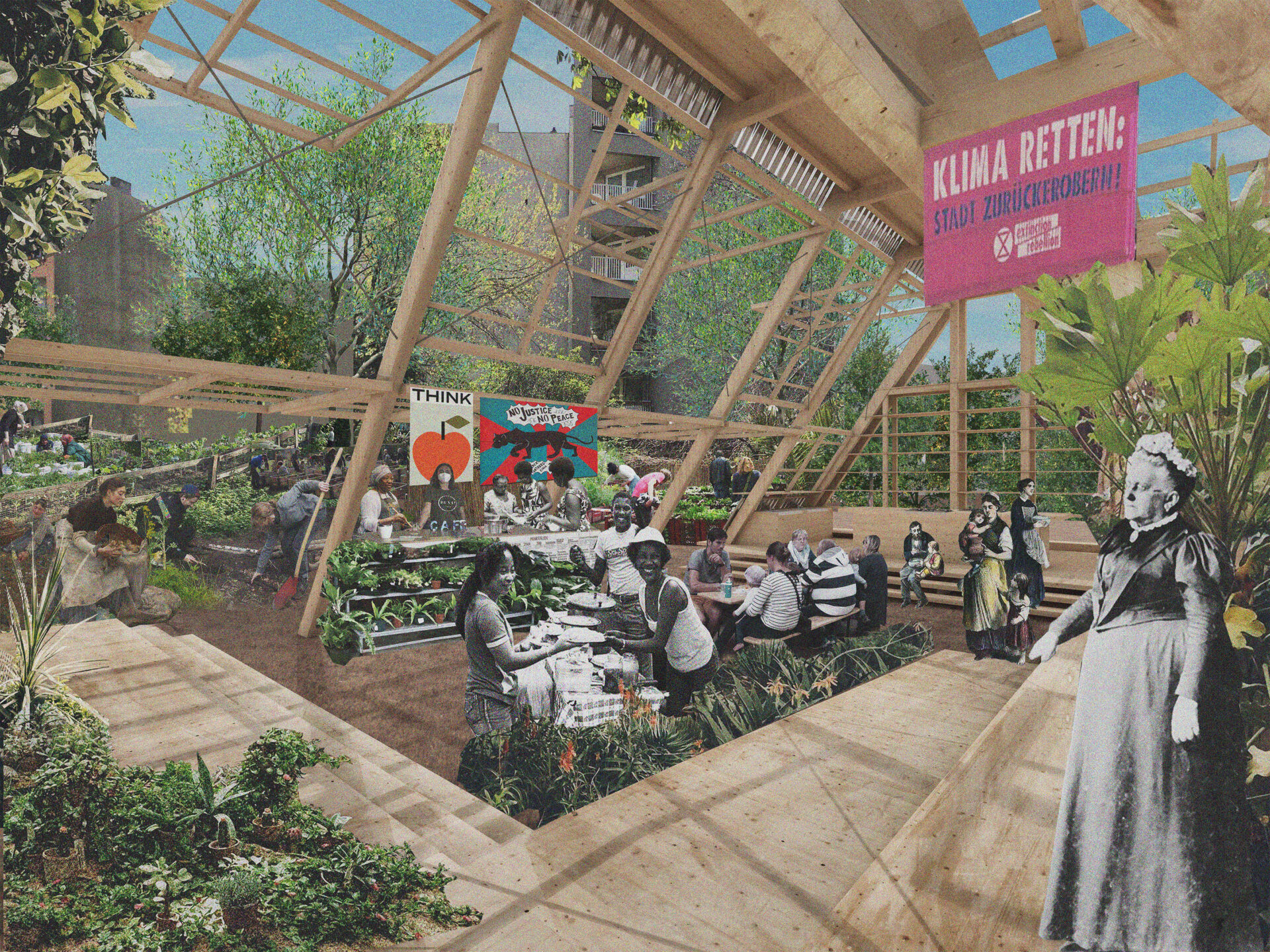
Hof fest
In the memory of the healing garden on ‘Maison de sante’, The new healing garden all the people, the initiatives and activators invites you to join and celebrate a day in the Hof with different workshops on mapping diverse species, perennial care, bee keeping, birds’ concert, nesting and roosting zones, bird watching, repairing cafe, making bird boxes, making new structures, cooking together, gardening in the vegetable yard, composting, building new out of old.

